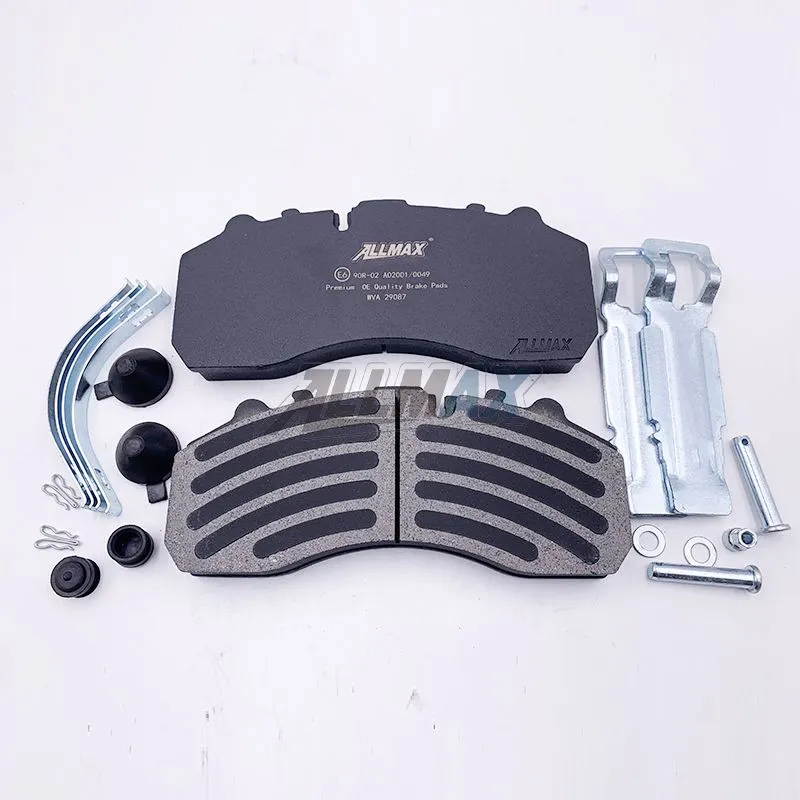Jun. 12, 2024
Automobiles & Motorcycles
When it comes to vehicle maintenance, brake pads are one of the most crucial components. They play a vital role in ensuring your car stops effectively, keeping you and others safe on the road. But when faced with the choice between ceramic and OEM brake pads, many drivers find themselves at a crossroads. Understanding the differences between these two types can help you make an informed decision that suits your driving needs and budget.
Brake pads are the part of your vehicle's braking system that apply pressure and friction to the brake rotors, causing your car to slow down and stop. They are essential for vehicle safety, converting the kinetic energy of your moving vehicle into thermal energy through friction. Without effective brake pads, your vehicle's stopping power would be severely compromised, leading to dangerous driving conditions.
There are several types of brake pads available, each with its own set of characteristics:
Ceramic Brake Pads: Made from a dense, durable ceramic compound, often mixed with small amounts of copper fibers.
Semi-Metallic Brake Pads: Contain a mixture of metal fibers (such as steel or iron), bonded with resin.
Organic Brake Pads: Made from non-metallic fibers such as glass, rubber, or Kevlar, bonded with resin.

Ceramic brake pads are constructed from a dense ceramic material similar to pottery and porcelain but much more durable. They also include fine copper fibers to help with heat conductivity and friction. These brake pads are known for their quiet operation, low dust production, and long lifespan.
Quieter Operation: Ceramic pads produce less noise compared to other types.
Low Dust Production: They generate finer, lighter-colored dust that is less likely to stick to wheels.
Durability: Ceramic brake pads tend to last longer due to their hard composition.
Consistent Performance: They perform well under a wide range of temperatures and driving conditions.
OEM stands for Original Equipment Manufacturer, which means these brake pads are made by the same company that produced the original parts for your vehicle. They are designed to match the exact specifications of the car's original brake system, ensuring optimal performance and compatibility.
Perfect Fit: OEM brake pads are tailored to your specific vehicle model, ensuring a perfect fit and function.
Reliable Performance: Designed to meet the original performance standards of your vehicle.
Warranty Coverage: Often come with warranty protection, providing peace of mind.
When it comes to stopping power and overall performance, both ceramic and OEM brake pads have their strengths.
Ceramic Brake Pads: Offer smooth and consistent braking under various conditions, making them ideal for everyday driving.
OEM Brake Pads: Provide reliable and predictable performance, often optimized for the specific characteristics of your vehicle.
One of the main reasons drivers opt for ceramic brake pads is the reduction in noise. Ceramic pads are significantly quieter than most OEM pads, contributing to a more comfortable and pleasant driving experience.
Brake dust can be a nuisance, affecting both the appearance and maintenance of your vehicle. Ceramic brake pads produce less and lighter-colored dust compared to OEM brake pads, which tend to generate more noticeable, darker dust.
The lifespan of brake pads is a critical factor in choosing the right type for your vehicle.
Ceramic Brake Pads: Typically have a longer lifespan due to their hard-wearing materials.
OEM Brake Pads: While also durable, their lifespan can vary depending on the driving conditions and habits.
Initial cost and long-term expenses are important considerations when selecting brake pads.
Ceramic Brake Pads: Generally more expensive upfront but may offer cost savings over time due to their longevity and reduced maintenance needs.
OEM Brake Pads: Often less expensive initially, but may need to be replaced more frequently depending on your driving style and conditions.
Eco-friendliness is becoming an increasingly important factor for many drivers.
Ceramic Brake Pads: Produce less dust and are generally considered more environmentally friendly.
OEM Brake Pads: The environmental impact can vary based on the materials used, but they often produce more dust and waste.
Ease of installation and compatibility with your vehicle are key considerations.
Ceramic Brake Pads: Can be installed on a wide range of vehicles but may require specific rotors for optimal performance.
OEM Brake Pads: Designed to fit perfectly with your vehicle's existing brake system, ensuring straightforward installation.
Choosing the right brake pads depends on your driving needs:
Daily Driving: Ceramic brake pads are great for everyday use, offering a quiet and clean performance.
Performance Cars: OEM brake pads can provide the precision and reliability needed for high-performance driving.
Heavy-Duty Use: For trucks and heavy vehicles, OEM pads might offer the necessary durability and stopping power.
Pros: Quiet operation, low dust, long lifespan, consistent performance.
Cons: Higher initial cost, may require specific rotors.
Pros: Perfect fit, reliable performance, warranty coverage, often less expensive upfront.
Cons: Can produce more dust, potentially shorter lifespan.
Choosing between ceramic and OEM brake pads ultimately depends on your driving habits, vehicle type, and personal preferences. Ceramic brake pads offer a quieter, cleaner, and longer-lasting option, making them ideal for everyday use. On the other hand, OEM brake pads provide a reliable and perfectly compatible choice, especially for those who prefer sticking with manufacturer-recommended parts. Consider your priorities and budget to make the best decision for your vehicle's braking needs.
If you are interested in sending in a Guest Blogger Submission,welcome to write for us!
All Comments ( 0 )